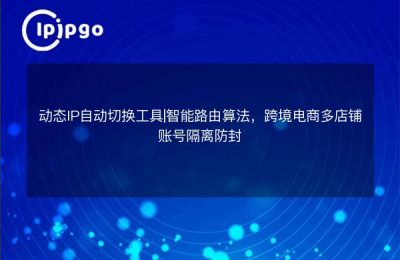
If you're a longtime online gamer, I'm sure you're no stranger to the word proxy. And when you need to connect to the Internet through a proxy server, you may have heard of the two main proxy methods - Socks5 and HTTP Reason. What is the difference between these two? Let's dig deeper today and open the veil of this mysterious world of proxies!
I. Agent background
Let's take a closer look and analyze why we need proxies. On the Internet, we often encounter some restrictions, such as certain websites or services may block IP addresses from specific regions. In order to break through these restrictions, we need to forward connections through a proxy server to realize the purpose of hiding the real IP address. And among proxy servers, there are two commonly used methods, which are Socks5 and HTTP proxy.
II. Socks5 Proxy
As the name suggests, Socks5 proxy is based on the 5th version of Socks protocol. It can forward packets directly to the target server for undifferentiated geolocation access. In contrast, HTTP proxies require a connection through a relay server. In other words, when you use the Socks5 proxy, your requests are sent directly to the target server without interference through a third-party server.
In addition, Socks5 proxy also supports UDP protocol, which makes it possible to have lower latency and higher stability in online games and other scenarios that require real-time data transmission.Socks5 proxy also has the function of authentication, which can ensure the privacy and security of the connection.
III. HTTP Proxy
HTTP Proxy is a proxy method based on the HTTP protocol that requires a relay server to make the connection. When using an HTTP proxy, your request is first sent to a relay server, which then sends it to the target server. This process is similar to the scenario where you delegate a person to convey a message for you, and you need to communicate with the target server through this person.
The difference is that HTTP proxies encapsulate data into the HTTP protocol format before sending it out. This means that in scenarios that require real-time interaction, such as online games, HTTP proxies may be less efficient than Socks5 proxies. Moreover, since HTTP proxies also require additional header information, they can cause some additional data overhead.
Fourth, the choice of Socks5 and HTTP proxy
So, under what circumstances should we choose a Socks5 proxy, and under what circumstances should we choose an HTTP proxy? This is a judgment call based on the actual situation.
If you need to get the best connection speed and stability in online games, then Socks5 proxy may be more suitable for you. And if you just need to simply browse the web, watch videos, etc., an HTTP proxy will do the trick.
In addition, in some scenarios with high security requirements, Socks5 proxy can provide better privacy and security. While when using HTTP proxy, the data encapsulation into HTTP protocol will have some impact on the privacy of the data.
Although Socks5 proxy has advantages in many aspects, you need to pay attention to some issues in the process of using it. For example, since Socks5 proxy supports UDP protocol, there may be a risk of abuse, so when choosing a Socks5 proxy, you need to ensure the security and reliability of the proxy server.
V. Summary
Through the introduction of this article, we learned the difference between Socks5 and HTTP proxy. Socks5 proxy is based on the Socks protocol, connecting directly to the target server, with better stability and latency; while the HTTP proxy is forwarded through the transit server, for simple web browsing and other scenarios.
When choosing a proxy method, we need to make a judgment based on the actual needs. If you pursue the best connection speed and stability, or have high requirements for security, then Socks5 proxy is a good choice. And for general Internet needs, HTTP proxy can meet your needs.
Finally, I hope this article has helped you understand Socks5 and HTTP proxies, and I wish you the best of luck in the online world!








